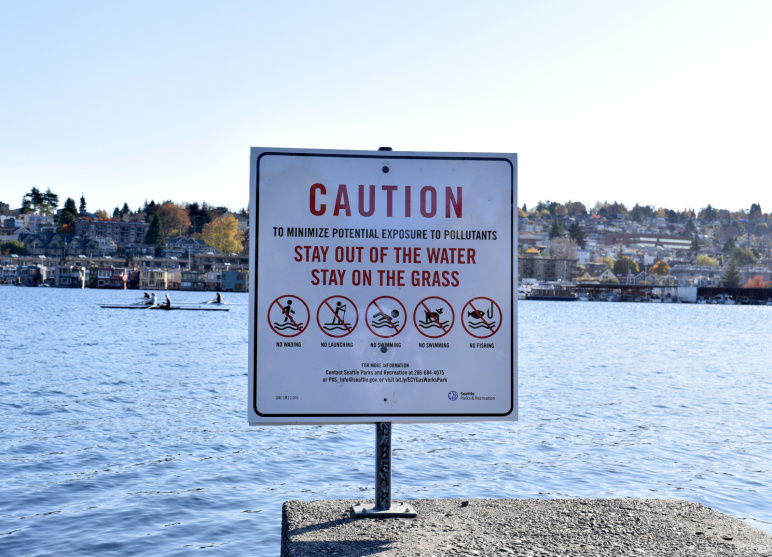Our Research Novel spectrofluorometer for online early detection of harmful algal blooms

Warning sign cautioning individuals to avoid entering the water and remain on the grass to reduce exposure to harmful pollutants.
Principal Investigators
Challenge:
Are we able to commercialize a novel sensor that is able to quantify the relative abundance of major algal groups and provide early detection of harmful algal blooms? And can we enable long-term monitoring of algae for water utilities and environmental agencies in lakes, rivers and coastal waters?
Research Strategy
- Refine the design and software for autonomous operation of our prototype spectrofluorometer device (REMORA)
- Integrate REMORA and a mobile platform for a pilot study to monitor harmful algae in a local lake at a high spatiotemporal resolution
- Conduct the market discovery and make a detailed business plan to address the customer needs of core market segments: drinking water utilities, recreational water areas, and industrial plants
Project description
Harmful Algal Blooms (HABs) are a growing problem in both freshwater and saltwater environments worldwide, causing an estimated $13B in annual damage to drinking water, water for recreational usage, commercial fishing areas, and desalination activities. Early detection of bloom activity online can enable more effective mitigation strategies. In prior research, Professor Whittle and his colleagues designed and evaluated a low-cost, field-deployable prototype spectrofluorometer called REMORA, for measuring induced fluorescence in a novel flow cell. The researchers successfully trained a machine learning model to discriminate and quantify cell concentrations for mixtures of different algal groups in water samples based on the measured fluorescence excitation-emission matrix (EEM) through an extensive laboratory calibration program using various algae cultures. In the Fall of 2022, the team demonstrated these capabilities in a series of field measurements at locations in Boston and Amsterdam. The goal of the J-WAFS project is to refine the design of REMORA and develop software for autonomous operation of the sensor that can be deployed remotely on mobile vessels/platforms to enable high-resolution spatiotemporal monitoring for harmful algae (e.g., cyanobacteria). Sensor commercialization will then be able to exploit the unique capabilities of REMORA for long-term monitoring applications by water utilities, environmental regulatory agencies, and water-intensive industries.
Additional Details
Impact Areas
- Water
Research Themes
- Sensors & Monitoring
- Modeling & Data Analytics
Year Funded
- 2023
Grant Type
- Solutions Grant
Status
- Ongoing


